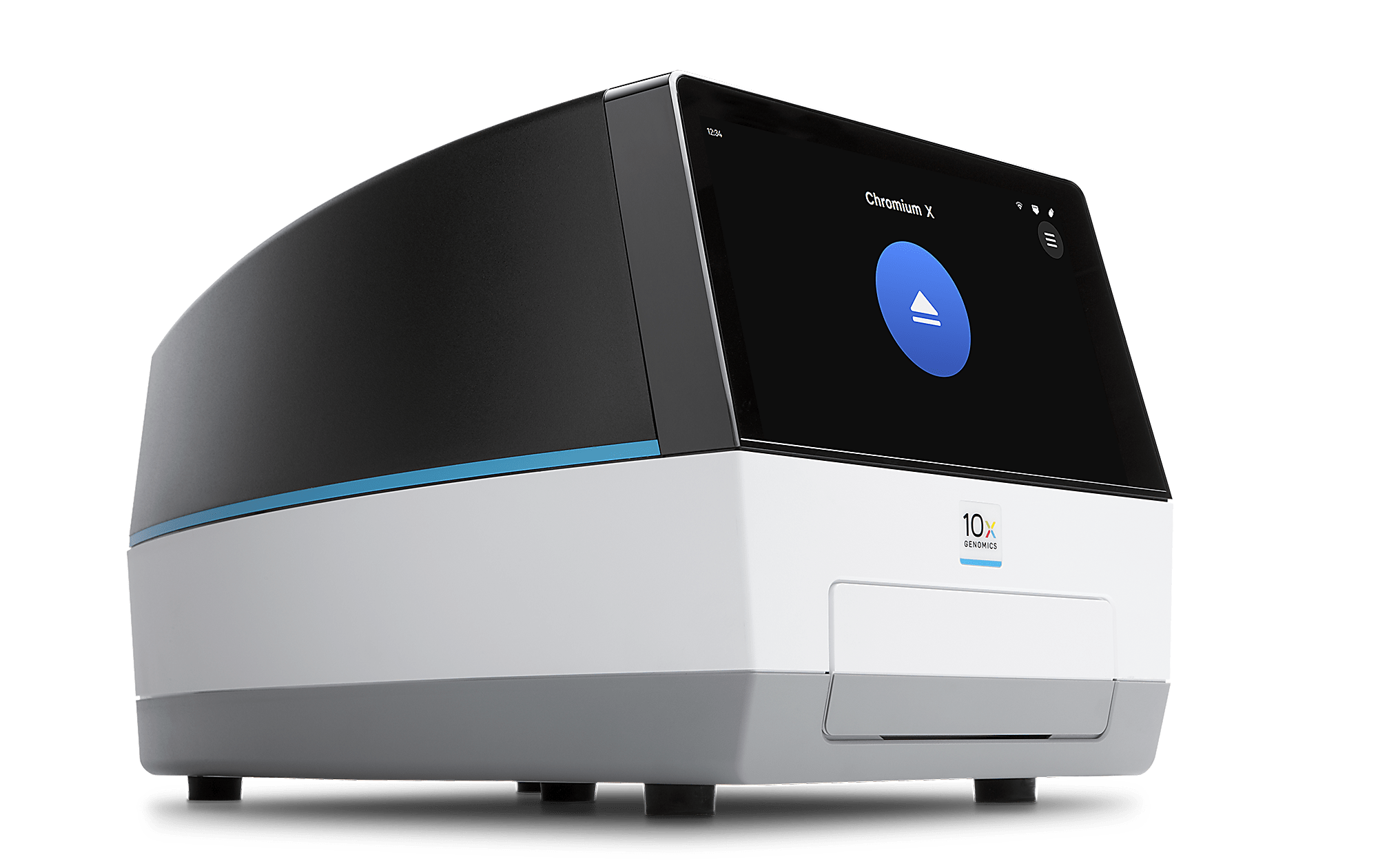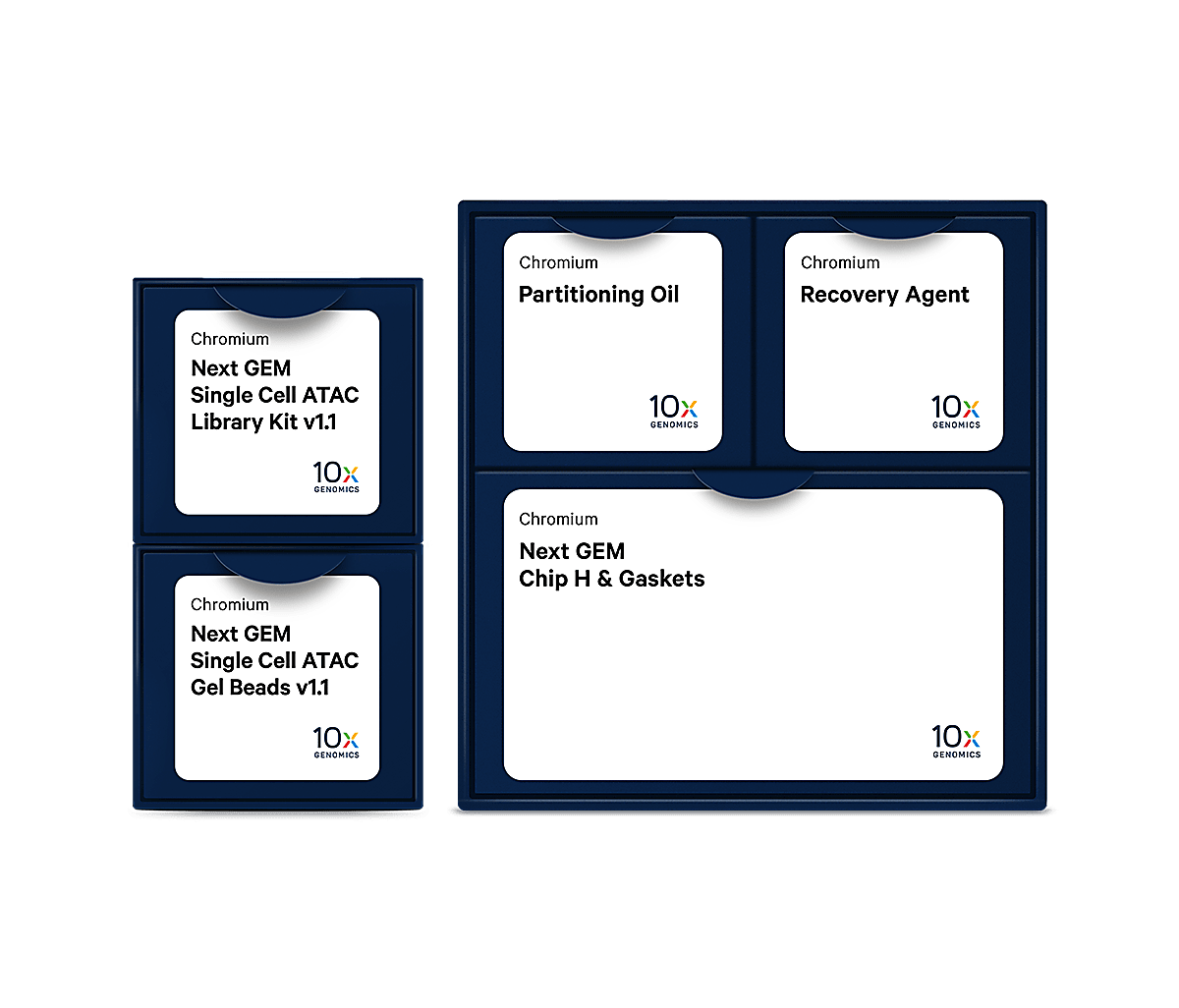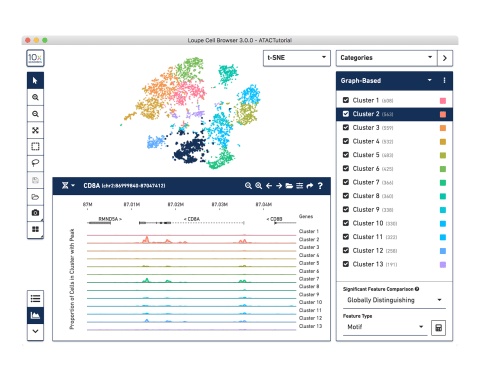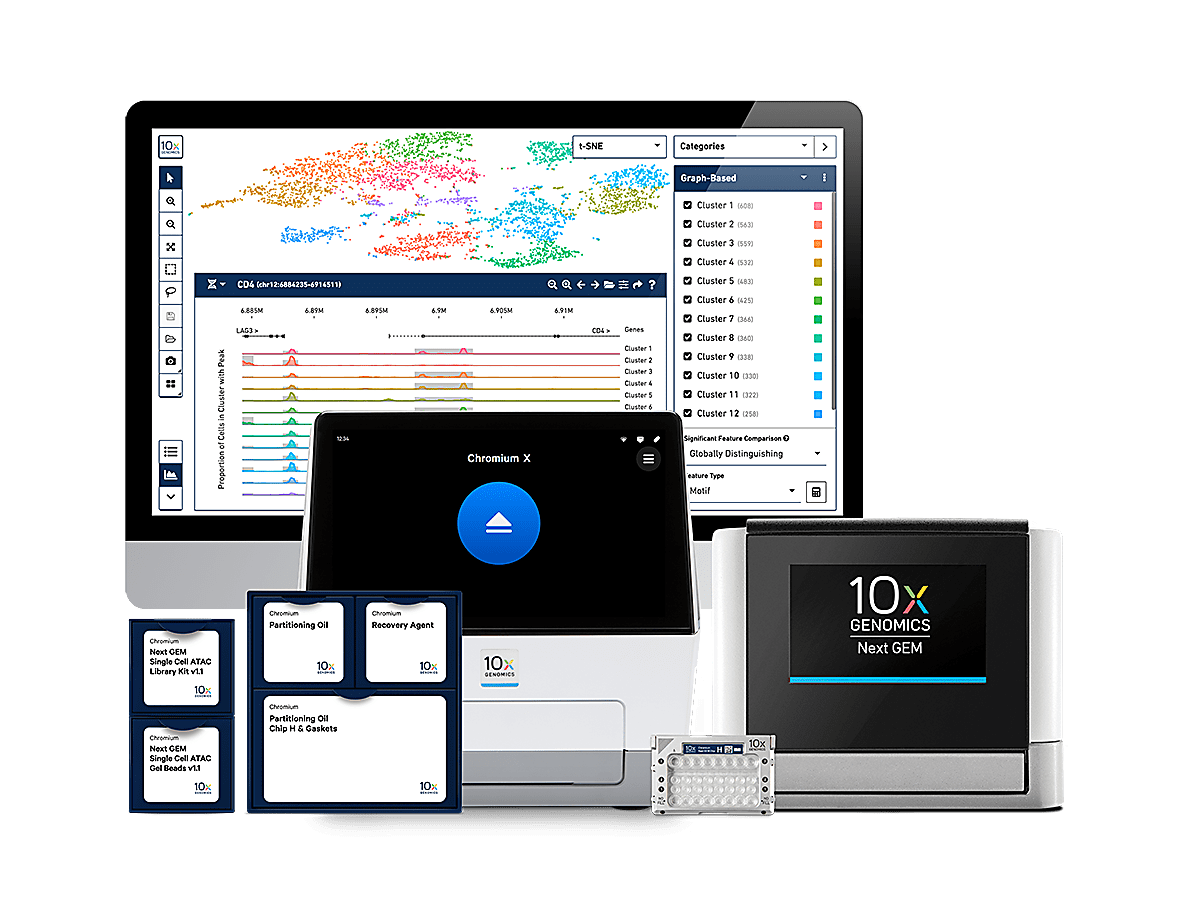Detect chromatin accessibility
Analyze thousands of unique open chromatin fragments per cell, genome-wide.
Single cell resolution
Go beyond population averages by measuring epigenomic profiles in single nuclei.
Flexible and scalable
Profile hundreds to tens of thousands of nuclei per chip.
Streamlined data analysis
Explore and visualize chromatin accessibility profiles with easy-to-use software.
One-day lab workflow
From sample to sequencing-ready library in one day.
Diverse sample compatibility
Demonstrated with cell lines, primary cells, and fresh and frozen tissue samples.
Explore what you can do
Define cell types and states
Identify master regulators
Discover cis-regulatory elements, such as promoters and enhancers
Characterize gene regulatory networks
Proven Results
Proven Results
Publications
Search hundreds peer-reviewed publications using Chromium Single Cell ATAC.
Single-cell multiomic analysis identifies regulatory programs in mixed-phenotype acute leukemia
Single-cell multiomic analysis identifies regulatory programs in mixed-phenotype acute leukemia
Nature Biotechnology, 2019, Jeffrey M Granja, et al.
Nature Biotechnology, 2019, Jeffrey M Granja, et al.
Massively parallel single-cell chromatin landscapes of human immune cell development and intratumoral T cell exhaustion
Massively parallel single-cell chromatin landscapes of human immune cell development and intratumoral T cell exhaustion
Nature Biotechnology, 2018, Ansuman T Satpathy, et al.
Nature Biotechnology, 2018, Ansuman T Satpathy, et al.
Hic1 Defines Quiescent Mesenchymal Progenitor Subpopulations with Distinct Functions and Fates in Skeletal Muscle Regeneration
Hic1 Defines Quiescent Mesenchymal Progenitor Subpopulations with Distinct Functions and Fates in Skeletal Muscle Regeneration
Cell Stem Cell. 2019, R Wilder Scott, et al.
Cell Stem Cell. 2019, R Wilder Scott, et al.
Rapid Generation of Somatic Mouse Mosaics with Locus-Specific, Stably Integrated Transgenic Elements
Rapid Generation of Somatic Mouse Mosaics with Locus-Specific, Stably Integrated Transgenic Elements
Cell. 2019, Gi Bum Kim, et al.
Cell. 2019, Gi Bum Kim, et al.
Resources
Find the latest app notes and other documentation Chromium Single Cell ATAC.
Deciphering Epigenetic Regulation with Single Cell ATAC-Seq
Deciphering Epigenetic Regulation with Single Cell ATAC-Seq
Application Note, 10x Genomics
Application Note, 10x Genomics
Single Cell ATAC-Seq for Characterization of Complex Biological Systems
Single Cell ATAC-Seq for Characterization of Complex Biological Systems
Application Note, 10x Genomics
Application Note, 10x Genomics
Our End-to-End Solution

Chromium Instrument with Next GEM technology
Our compact instrument
Our scalable instrument

Chromium Single Cell ATAC Reagents
With our reagent kits, detect open chromatin regions using the included transposase, and generate ready-to-sequence NGS libraries.

Analysis and Visualization Software
Our analysis pipelines
Our visualization software

World-Class Technical and Customer Support
Our expert support team can be contacted by phone or email.
Workflow
- 1
Prepare your sample
Start with a nuclei suspension isolated from cell culture, primary cells, or fresh or frozen tissue.
Resources - 2
Construct Your 10x Library
Construct a 10x barcoded library using our reagent kits and a compatible Chromium instrument. Each member of the Chromium instrument family encapsulates each cell with a 10x barcoded Gel Bead in a single partition. Within each nanoliter-scale partition, cells undergo reverse transcription to generate cDNA, which shares a 10x Barcode with all cDNA from its individual cell of origin.
Resources - 3
Sequence
The resulting 10x Barcoded single cell ATAC-seq library is compatible with standard NGS short-read sequencing on Illumina sequencers, for massively parallel epigenomic profiling of thousands of individual cells.
Resources - 4
Analyze Your Data
Our Cell Ranger ATAC analysis software generates open chromatin profiles for each cell, identifies clusters of cells with similar profiles and calls peaks, and can aggregate data from multiple samples.
Analysis Pipelines Output
Output includes QC information and files that can be easily used for further analysis in our Loupe Browser visualization software, or third-party R or Python tools.
Resources - 5
Visualize Your Data
Use our Loupe visualization software to interactively explore your results, perform differential accessibility analysis, find clusters enriched for motifs of interest, and compare across samples.
Do I need to be a bioinformatician to use it?
Loupe is a point-and-click software that’s easy for anyone to download and use.
Resources
Frequently Asked Questions
It enables profiling of the open chromatin landscape at single cell resolution.
Yes, using third party tools. For more information, watch our webinar.
A nuclei suspension is needed. It is possible to obtain high quality nuclei suspensions from fresh and cryopreserved cells, fresh tissue, and frozen tissue. This assay has been optimized for human and mouse samples, although other species may be possible.
Comparisons between bulk ATAC-seq and single cell ATAC-seq from cell lines indicates that single cell ATAC-seq recovers >=90% of peaks recovered by bulk ATAC-seq. Single cell ATAC-seq also provides the resolution to look at chromatin profiles at a cell-type specific level.
ATAC-seq captures all open chromatin regions, not just those bound by a specific factor. It is an unbiased approach to look for epigenetic changes in a sample. For proteins with a known sequence binding motif, the included software can identify those motifs that are enriched in open chromatin on a cell-by-cell basis.

